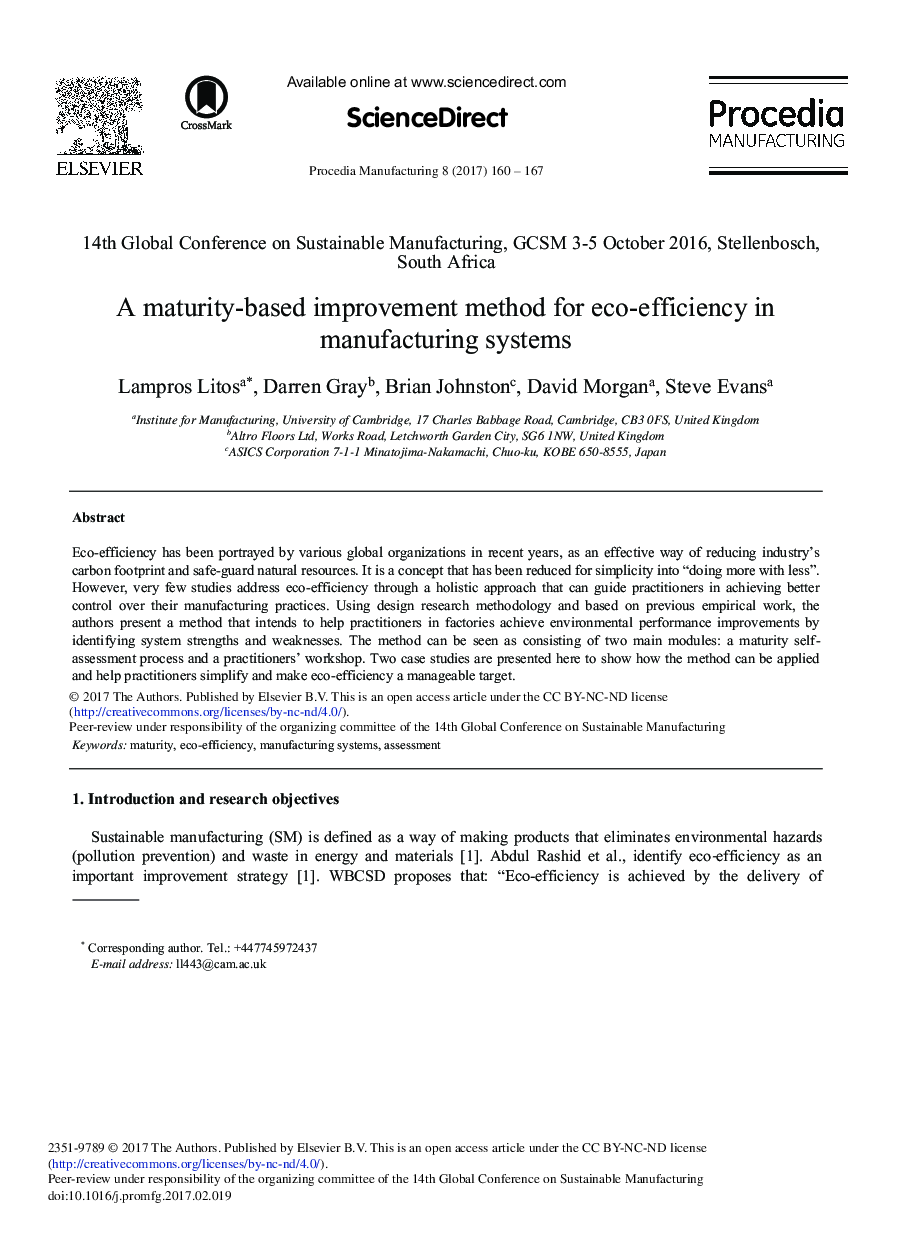| Article ID | Journal | Published Year | Pages | File Type |
|---|---|---|---|---|
| 5128919 | Procedia Manufacturing | 2017 | 8 Pages |
Eco-efficiency has been portrayed by various global organizations in recent years, as an effective way of reducing industry's carbon footprint and safe-guard natural resources. It is a concept that has been reduced for simplicity into “doing more with less”. However, very few studies address eco-efficiency through a holistic approach that can guide practitioners in achieving better control over their manufacturing practices. Using design research methodology and based on previous empirical work, the authors present a method that intends to help practitioners in factories achieve environmental performance improvements by identifying system strengths and weaknesses. The method can be seen as consisting of two main modules: a maturity self-assessment process and a practitioners' workshop. Two case studies are presented here to show how the method can be applied and help practitioners simplify and make eco-efficiency a manageable target.
